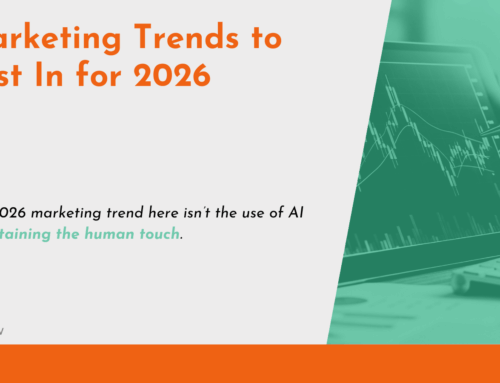
A general fatigue exists around the discussion of the novel coronavirus, but the fact remains that the pandemic has shifted consumer behavior in ways that may never shift back. Fear has directed buyers to new shopping avenues, and brands have followed in order to survive.
When buyers discover these new shopping avenues are not just safer but also more convenient, they’re likely to continue this new behavior, even as the panic from COVID-19 subsides. One of these new shopping avenues that has attracted even the biggest brand names is the direct-to-consumer model.
Outside Forces Affecting Buyer Behavior
As marketers, we often consider how our content—our approach—might affect consumer behavior. We study the psychology of buying and develop new “tricks” using the information we glean. There are tons of studies, from “Reciprocity Decay” to the “Noble Edge Effect,” all of which can be used to influence buyers.
But what happens when those forces come from the outside, in ways that we can’t control? In general, this outside force has been technology, whether that technology improved the manufacturing of products or the purchasing of products.
For instance, consider milk deliveries. When technology became available to both lengthen milk’s shelf life and store larger quantities, buyers were able to pick up larger quantities of milk during their trips to the grocery store. The milkman became obsolete.
More recently, the internet has changed buyer behavior by making ecommerce possible. Amazon then reinvented the department store in their online space, and, well, you know the rest.
Pandemic As an Outside Force
When outside forces arise, legacy brands are often caught off guard and end up losing market share to smaller entities that can pivot quickly. We’ve seen this time and again, most notably with Blockbuster and the arrival of Netflix, or with Kodak film and the rise of the digital camera.
The biggest mistake a brand can make is to believe it’s simply too big and too profitable to lose. This can lead to bad decisions—listen to the Land of the Giants podcast about the Netflix effect. Blockbuster had the chance to save itself…and didn’t.
All of this brings us to the current sea of change we’re seeing with consumer behavior—and how legacy brands are responding. We’re now several months into a pandemic that shows no signs of slowing. While grocery stores remained open even during the strictest of lockdown enforcement, the numbers show that, while grocery sales revenue went up—Albertsons reported sales growth of 276%—grocery visits actually went down. The same is true for online shopping versus visits to physical stores. Buyers were simply afraid they would encounter crowds where contact couldn’t be avoided, so instead they avoided the store altogether.
This did lead to a rise in grocery delivery spending, but it also forced legacy brands to take a closer look at how they’re getting their products in front of their buyers. For decades, these legacy brands like Coca-Cola, Campbell’s, Heinz, and even Budweiser relied on grocery store placement to entice their buyers. Retail brands relied on window and rack placement. When buyers aren’t at the store, what’s a legacy brand to do?
Taking pages from several direct-to-consumer brands—startup brands that have actually managed to disrupt legacy brands, like Dollar Shave Club—several of the big boys have begun exploring their own direct-to-consumer models. Of course, their ideas of DTC may not yet be as direct as, say, Casper mattresses, but they’re getting there.
The Benefits of DTC
Aside from the ability to reach buyers one-on-one through their direct marketing models, legacy brands are starting to see there are several other benefits to adopting the DTC model.
First: sales. According to Nike, their online sales spiked by 75% after focusing more of their investment into DTC sales. Lululemon reported a 68% increase. Nestle experienced “significant increases” with their KitKat DTC service.
But it’s not just sales that have many legacy brands turning to a direct-to-consumer model. Pivoting to accommodate new consumer behavior has provided companies with additional value, and that’s data. The more buyers visit their DTC websites, such as PepsiCo’s PantryShop.com, the more these companies learn about their behaviors. Where do they live? What are their spending habits? How is their target audience changing year after year?
This data at their fingertips gives legacy brands the ability to learn even more quickly so that they can possibly pivot sooner the next time an outside force changes buyer behavior. And that could be the reason those brands survive.
If your brand is struggling to adapt to new buyer behaviors or to determine which pivot will work best to help your company survive, don’t hesitate to reach out.





